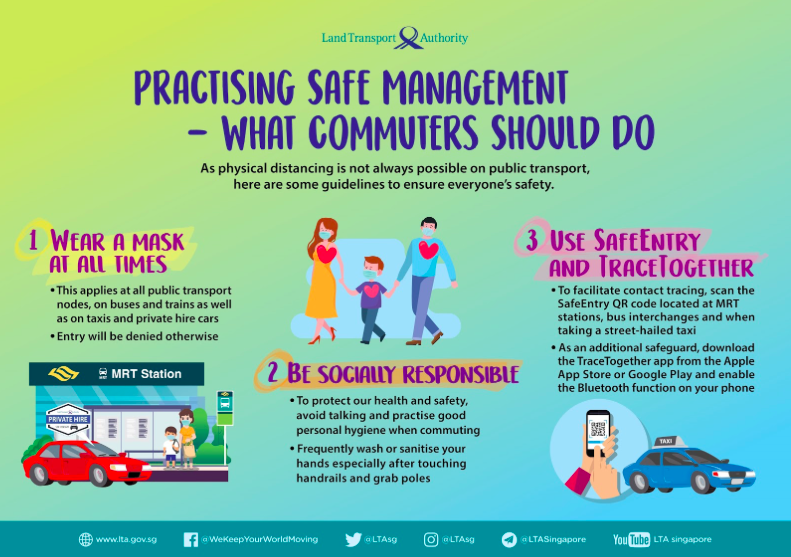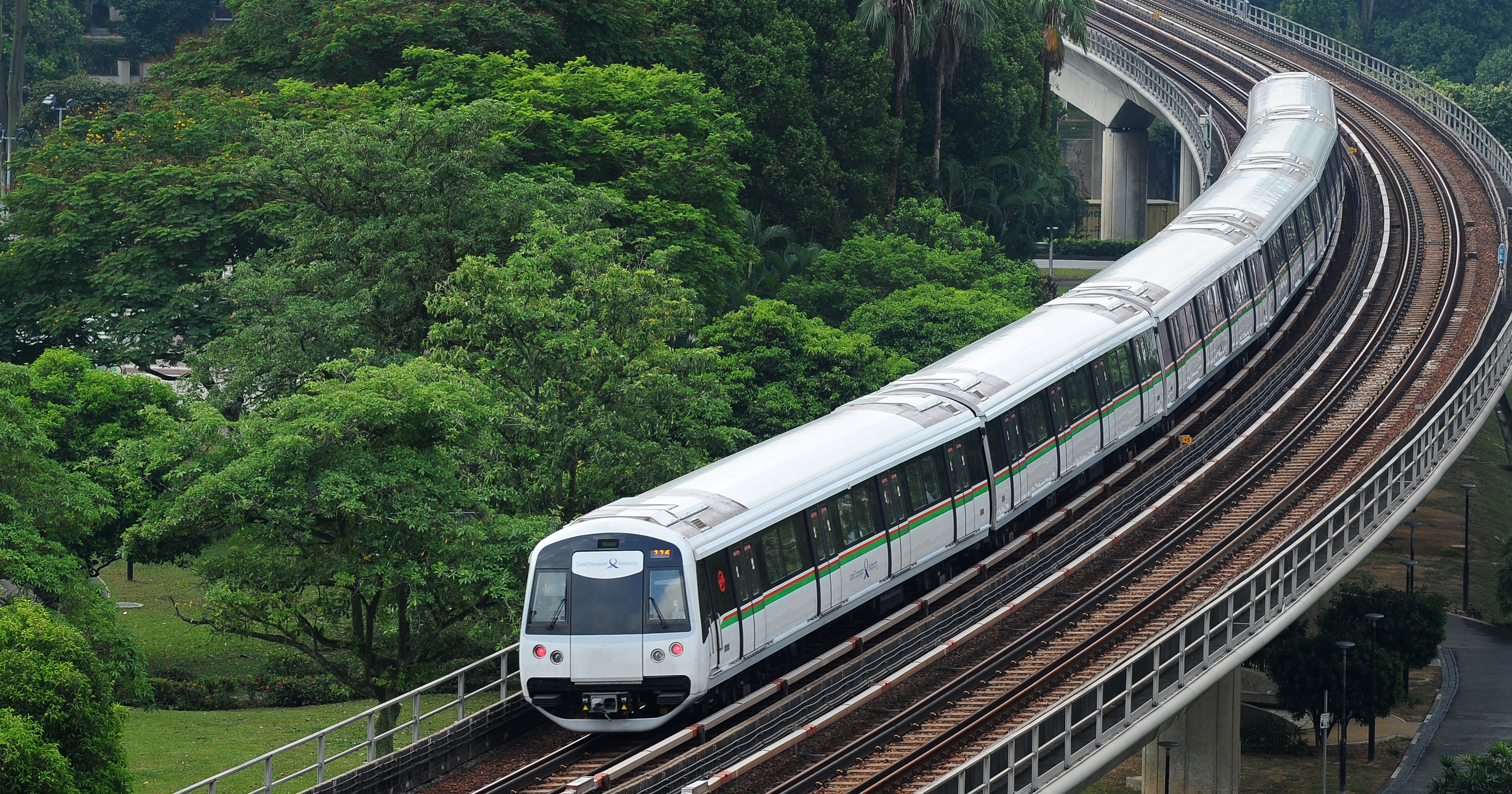Now that Singapore has exited the Circuit Breaker, students will be going back to school and some businesses will resume operations — meaning, we’re going to see more people on the public transport network.
And while it’s nice for some of us, at least, to return to some semblance of normal life, some commuters may be worried about taking a crowded train or bus (especially during peak hour!) while we’re still in the midst of a pandemic.
This is why cities around the world are stepping up cleaning, disinfecting as well as contact tracing efforts to make public transport a safe mode of transport for commuters, while working to cope with Covid-19.
Mandatory health declarations, wearing masks
In Wuhan and many other Chinese cities, commuters have to scan a QR code to indicate that they are healthy before they board the bus or train. Should the need arise, contact tracing can be done more quickly to identify people who may have come into contact with Covid-19 cases.
Cities like South Korea, Taipei and Spain require their commuters to wear a mask while on the public transport network. This helps to minimise virus transmission especially when physical distancing is not possible.
Stepped-up cleaning and sanitising
Hong Kong’s MTR deploys a robot to spray hydrogen peroxide in hard-to-reach areas of its trains, on top of regular cleaning.
Shenzhen buses are sanitised after every trip with close attention paid to high-contact areas like handles, armrests and seats.
Similarly in Singapore, public transport operators do daily cleaning and disinfection at bus interchanges, terminals, and train stations, as well as on buses and trains. In addition, an antimicrobial chemical coating is applied on all high-touch surfaces.
 Hong Kong MTR’s disinfecting robot. Image via YouTube.
Hong Kong MTR’s disinfecting robot. Image via YouTube.
 Physical distancing signs were put up previously during the Circuit Breaker when physical distancing was possible due to lower ridership. Photo by Jeanette Tan
Physical distancing signs were put up previously during the Circuit Breaker when physical distancing was possible due to lower ridership. Photo by Jeanette Tan
When the Circuit Breaker was implemented, commuters were required to leave spaces between one another in seating, and wear a mask while on trains and buses.
With more commuters returning to their workplaces and schools, the physical distancing stickers on trains and buses will no longer be feasible and are thus removed progressively from today onwards.
Transport Minister Khaw Boon Wan noted this too.
“When crowds return to buses and trains, safe distancing rules will push waiting crowds onto the platforms and outside of stations, with long queues. I can imagine impatient, and even angry commuters.”
Nonetheless, practical measures such as mask-wearing, enhanced cleaning regimes, and running public transport frequencies at the maximum operational capacities will help keep commuters safe, especially if we are all socially responsible and observe good personal hygiene.
And so, here are some “Safe Management” practices that commuters should adopt to protect themselves and other commuters when travelling on public transport:
1. Be socially responsible
Since the public transport network is used by the masses, being socially responsible has the benefit of protecting yourself as well as your fellow commuters.
Refrain from talking to others and on the phone when you’re travelling on public transport so that you can keep your droplets to yourself (check out this simulation to understand just how an infected person on the train can coat other commuters with infected droplets — just by talking). This no-talking policy is also set to be introduced by Jakarta’s PT Kereta Commuter on the KRL Commuterline.
If you’re sick, don’t take public transport. If you absolutely have to travel, do so outside of peak periods (although if you’re sick, you really should not be going to work and you should instead be walking to your nearest neighbourhood clinic).
Use a tissue or handkerchief when you’re sneezing or coughing and dispose of them in the proper bins.
Lastly, don’t forget to wash or sanitise your hands often and especially after touching grab poles or handrails.
2. Wear a mask
Even though the Circuit Breaker ended on June 1, you’ll still have to wear a mask if you want to take public transport or taxis and private hire cars — indeed, the wear-a-mask-at-all-times rule continues to apply as soon as you step out of the house, save for rigorous exercise.
Wearing a mask prevents you from spreading your droplets to other commuters, and also partly shields you from theirs. Commuters who do not have or who are not wearing a mask will not be allowed to enter the public transport network.
Besides, now that each resident in Singapore has been given two free reusable masks, there’s little reason why you shouldn’t be wearing one on trains and buses.
3. Use SafeEntry and TraceTogether
Aid contact tracing efforts by using SafeEntry to log your particulars before entering train stations, bus interchanges, and taxis. You can do that by scanning a QR code, or simply using your SingPass app.
The TraceTogether app logs your proximity to others by blasting short-distance Bluetooth signals between phones of participating TraceTogether users who are in close proximity.
The app estimates the distance between the app users, and the duration of such encounters. This information also comes in handy for contact tracing purposes if you or a close contact gets diagnosed with Covid-19.
Certainly, you might find these measures inconvenient, but they are absolutely necessary for everyone’s protection as we start taking public transport again. Who knows — perhaps as we adapt to a new normal, these habits might become fixtures of our commuting experience.

Top image via LTA. Thanks to this sponsored article by LTA, this writer has been reminded of the need to wear a mask on public transport.
If you like what you read, follow us on Facebook, Instagram, Twitter and Telegram to get the latest updates.
